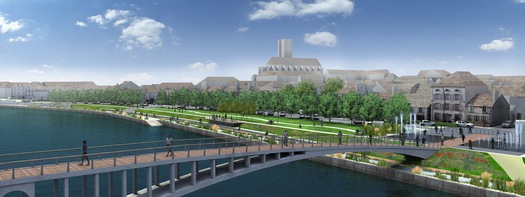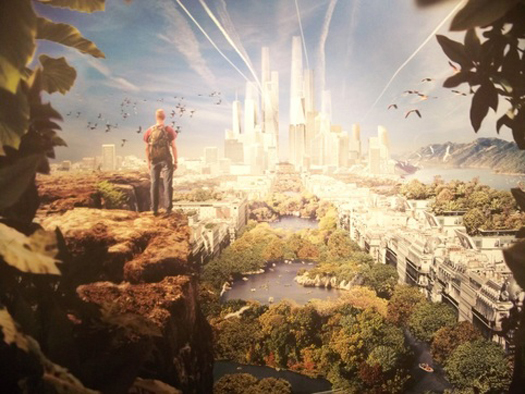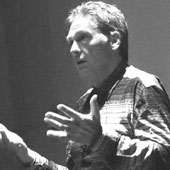
A huge urban master plan in southen France gets serious about nature as a project. In Bordeaux 55,000 (above) the city of Bordeaux (CUB) has invited five multidisciplinary teams to develop projects, during a a six month “competitive dialogue”, that will explore ‘how best to transform 55,000 hectares (136,000 acres) into natural areas’.
Bordeaux has big plans to become a major European city. Huge investments in high-speed rail infrastructure are designed to make Bordeaux the ‘crossroads of South West Europe’. Within that global-mobility framework, nature is “one of the major projects of the decade ahead”.
Several areas of intervention have been identified: the heart of the city; major adjacent agricultural and forest areas; enhancement of wetlands or flood plains; and various wastelands. Each team is required to develop its project collaboratively with municipalities and other local actors.
Filling up cities decoratively with plants and trees is not a bad thing in itself. Cities, and not just rain forests and rivers, can provide ecosystem services. Indeed biodiversity can be higher in cities than surrounding rural areas when the latter are dominated by industrial agriculture. But is nature in the city best thought of as a new kind of park?
A gigantic exhibition in Paris last year called The Fertile City: Towards An Urban Nature pointed in this direction. It presented ambitious nature-in-the-city projects from all over the world – New York, Paris, Munich, Beirut, Detroit, and Buenos Aires. It was a engaging spectacle – but the show’s surrealistic poster (below) said it all: “Look At Me!”

The effect of the Paris exhibition was rather like a still-life painting of a fruit bowl: decorative, but you can’t eat it. Nor did the show explore the social and economic processes needed if our cities are to become fertile in real life.
Bordeaux 55,000 at least promises more than a pleasant view for arriving TGV passengers. This is surely the first time that urban agriculture has been embraced by a northern city on such a large scale; and the teams are required to use the concept of resilience, and the design principles of permaculture, in developing their proposals.
The composition of the five teams promises a multi-faceted approach. They include specialists in architecture, geography, economics, agronomy, ecology, planning, development, landscape, sociology, tourism, hydrology, philosophy, history and – an especially wise and enlightened touch – writing. (The writer is not involved in any of the Bordeaux teams but is open to offers from other cities).
A group called BeCitizen, for example, describing itself as a specialist in ‘disruptive strategy’, promotes a model of growth that ‘restores natural and human capital’. The group has previously created the ‘future vision of a post-carbon territory’ for the Ministry of Ecology; it is also helping to establish an investment fund for the rehabilitation of polluted soils. The landscape designer Michel Corajoud, who already involved in development of quays on Bordeaux’s left bank, is more pictorial in approach – but he is also muti-sensory: I’m not sure that it counts as ‘nature’, but this writer is especially fond of his ‘garden of the 40 plant essences‘.
A team led by Coloco is known to readers of this blog for a project called Monumento, in Brazil, that set out to re-purpose an abandoned 24 story skyscraper in Sao Paulo. Until history so brutally intervened, Coloco were also involved in the development of a masterplan for a green belt in Tripoli. Their design involved a linked system of parks; a water saving strategy; and an ecological corridor as interfaces with the outside of the city.
One hopes that Bordeaux 55,000 makes it past the drawing board – but the precedents are not encouraging. The project comes three years after proposals to make Paris “the world’s most sustainable post-Kyoto metropolis” were made by 12 famous architects in a big competition commissioned by (then) President Sarkozy. What actually got approved, to date at least, is a $30 billion public transport network called Le Grand Huit.
The purpose of this fast, 130 km long public transport service is to links big development clusters in the city’s rapidly growing periphery. The word nature does not appear in its prospectus.


Comments [2]
08.28.12
12:46
"The Fertile City: Towards An Urban Nature"
12.24.13
04:04